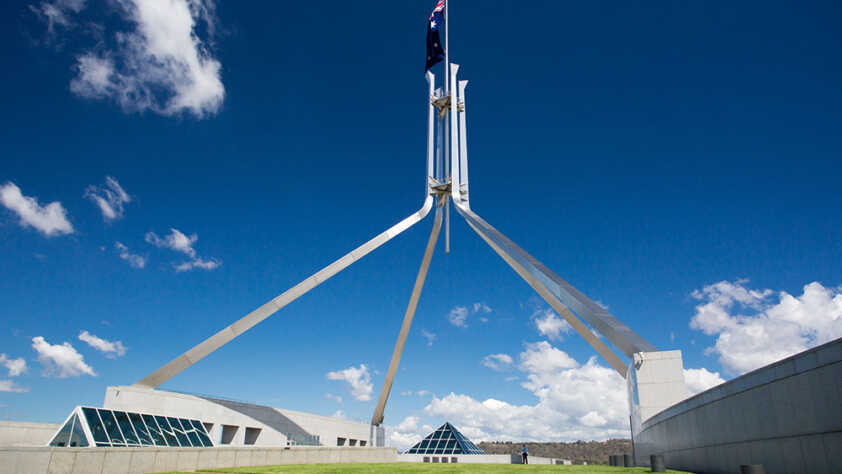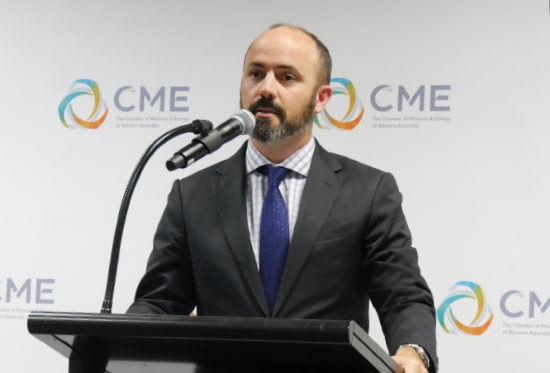The Chamber of Minerals and Energy of Western Australia (CME), in collaboration with PricewaterhouseCoopers (PwC), is proud to launch the 2013 State Growth Outlook.
“The State Growth Outlook provides an overview of the Western Australian resource sector’s development and growth intentions for the next 10 to 15 years,” CME Chief Executive Reg Howard-Smith said.
WA Minister for Planning, the Hon. John Day, launched CME’s 2013 State Growth Outlook today.
The Outlook is based on CME member surveys and publicly available information, and supply side information sourced from government and other suppliers.
“The Outlook considers the key growth enablers of people, energy and water,” Mr Howard-Smith said.
“It also looks at the demand drivers and outlook for key hard infrastructure including airports, ports, road, rail, and social infrastructure.
“While some supply side issues associated with the key growth enablers are starting to be addressed, they remain a major inhibitor to ongoing growth of the sector.”
Mr Howard-Smith said the 2013 State Growth Outlook was published during a period of change for the resources sector as it moved from a construction to production phase.
He said the Outlook reported energy and water demands would continue to increase and supply side settings must not get in the way of infrastructure development.
“At the same time industry is plagued by escalating costs of doing business, fluctuating commodity prices, increasing difficulty in gaining access to capital, and policy settings which are not fostering growth in the resources sector,” Mr Howard-Smith said.
“Governments and industry need to work in partnership to ensure policy settings are primed to ensure current projects are delivered efficiently and effectively and future investment is attracted to the State.
“The Outlook for the sector is positive; there is up to $200 billion of new or expanding projects either underway or planned.
“These opportunities will deliver broader economic benefits to the State and nation for many years to come.”
The 2013 State Growth Outlook summary is available one the CME website. Key findings of the Outlook are listed below.
Key Findings
Productivity
• Labour productivity in the mining sector is the highest of any industry in Australia.
• However, mining sector productivity has been in decline since 2001, with labour productivity falling by 50% and capital productivity by 37%.
• The decline in part can be attributed to large capital investments being made ahead of time as new capacity is being constructed, and until recently, higher commodity prices leading to more marginal resources being pursued.
People
• The workforce required for growth plans in the minerals and energy sector in Western Australia is projected to peak at 125,000 people in 2014. This is nearly an 8% increase on the existing workforce.
• CME is pleased to see the accuracy of our 2011 forecast, which predicted 120,000 workers in 2012 – we are only slightly below that (Base used in this study is116,000 in 2012).
• After the peak in 2014, employment in the minerals and energy sector will reduce as the current wave of construction activity gives way to operations. From 2018, the workforce is projected to reduce to below the existing levels.
• As we see an increase in the operational workforce we will see a change in skills required by sectors will change.
Electricity
• Electricity consumption in Western Australia could increase approximately 52% by 2018, driven largely by projects in the resources sector.
• The majority of new electricity generation required by the sector in 2018 is for projects in the Pilbara region (70%) and the Mid West (15%).
• The majority of demand is expected to be met through self generation (95%) and fuelled by natural gas (94%).
Natural Gas
• Minerals and energy project demand for gas is expected to increase to above 2012 levels by 2018 – a 47% increase on the current estimated consumption.
• Comparatively, the historic growth rate for the industry was 14% over the 10 year period to financial year 2011. This figure alone underscores the growth of the sector.
• Again the Pilbara region drives this growth, alone accounting for over 70% of the forecast requirements by 2018.
• The Department of Mines and Petroleum supply forecasts appears tight when compared to expected demand. However, an increase in capacity from new domestic gas projects, including the possible development of onshore gas reserves, may play a role in addressing this.
Water
• Similar to the 2011 survey, the regions requiring the most water are still the Pilbara and the Mid West. Projects will continue to meet their own demand through self extracted ground water.
• Incremental minerals and energy water abstraction is projected to increase nearly 41% by 2018 (580GL in 2012 to 980GL in 2018).
• 18% of this will be due to dewatering, with an increasing incidence of reinjection into aquifers.
Infrastructure
• Passenger volumes at Perth Airport more than doubled between 2001 and 2011, from almost 5 million to 11.3 million.
• Resource sector companies are heavy users of Perth airport during peak periods, and the majority of the 640,000 additional resource sector passengers forecast to 2017 are expected to require flights during this time.
• Addressing the peak capacity problem at Perth Airport will be a defining challenge and requires ongoing cooperation between the airport, industry, and government.
• Ports in the Pilbara continue to do the State’s export heavy lifting, with Port Hedland and Dampier Ports together accounting for 90% of export volume. This trend is forecast to continue, with up to 95% of all new Western Australian trade volume being handled by Pilbara ports.
• Bulk export facilities are required at Anketell, the Mid West, and Esperance to facilitate developments in those regions.
• The Great Northern Highway and arteries out of Port Hedland, the transport of over-size and over-mass, or high wide loads, is a challenging issue for mining and energy companies.
• Industry needs to continue working closely with Main Roads and the Department of Transport to deliver improvements through the new Over-Size Over-Mass Unit within Main Roads, and to input into the Regional Freight Transport Network Plan.
• Continued growth in exports will require additional rail capacity, and the protection of rail corridors for future growth.
• Perth is competing for internationally mobile, highly skilled minerals and energy workers. These workers are able to choose from a wide range of international resource hubs.








